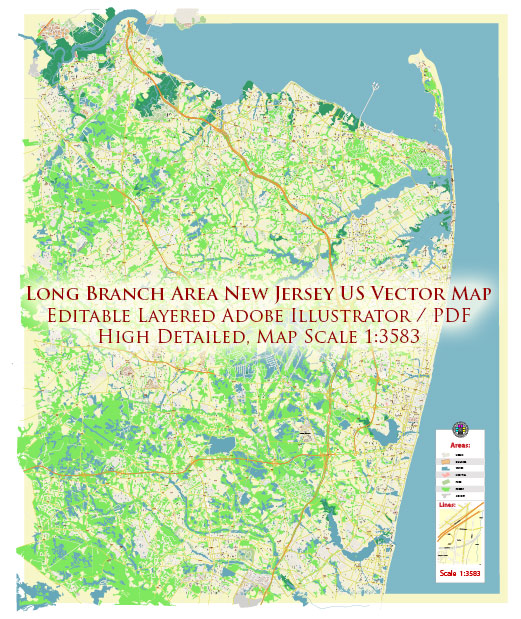Long Branch, located in Monmouth County, New Jersey, has a rich history of urban development that spans several centuries. Here’s an overview of the area’s urban development history:
- Early Settlement (17th Century): The area that is now Long Branch was initially settled by the Lenape Native Americans. European settlers, primarily English and Dutch, arrived in the 17th century and established small agricultural communities.
- 19th Century – Resort Destination: In the 19th century, Long Branch gained prominence as a fashionable seaside resort destination. Wealthy families, including several U.S. presidents, built grand Victorian mansions along the coastline. Long Branch’s popularity as a resort town continued to grow throughout the century.
- Civil War Era: During the Civil War, Long Branch served as a recuperation center for Union soldiers. The town’s reputation as a healthful retreat contributed to its appeal.
- Post-Civil War Development: After the Civil War, Long Branch experienced significant development. The construction of railroads, including the New York and Long Branch Railroad, facilitated easier access for visitors and contributed to the town’s growth.
- Decline and Redevelopment (20th Century): In the early 20th century, Long Branch faced a decline in popularity as a resort destination due to changing travel patterns and the Great Depression. Many of the grand Victorian mansions were demolished or fell into disrepair. However, the town later underwent efforts to revitalize and modernize.
- Urban Renewal (Mid-20th Century): In the mid-20th century, Long Branch, like many other American cities, experienced urban renewal initiatives. This involved the demolition of older structures and the construction of new buildings and infrastructure to revitalize the urban core.
- Contemporary Development: In recent decades, Long Branch has witnessed ongoing efforts for redevelopment, including improvements to the waterfront, the construction of modern residential and commercial spaces, and the enhancement of public amenities. The Pier Village development, for example, has played a significant role in transforming the city’s waterfront.
- Cultural and Economic Diversity: Long Branch is known for its cultural and economic diversity. The city has a mix of residential, commercial, and recreational areas. Its beach, boardwalk, and cultural events contribute to its appeal as a year-round destination.
Understanding Long Branch’s history of urban development provides insight into the factors that shaped the city into what it is today—a blend of historical charm, modern amenities, and a diverse community.


 Author: Kirill Shrayber, Ph.D.
Author: Kirill Shrayber, Ph.D.